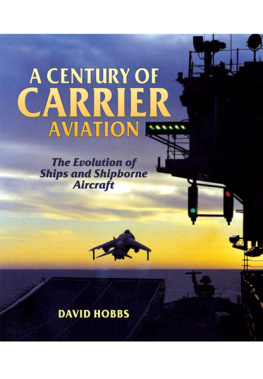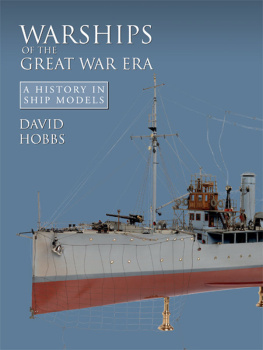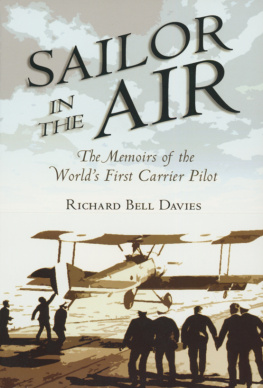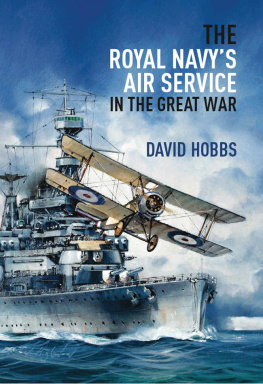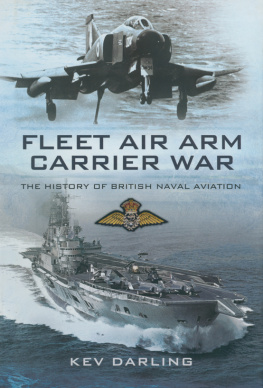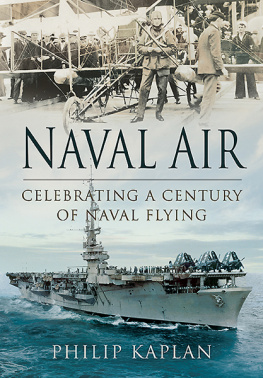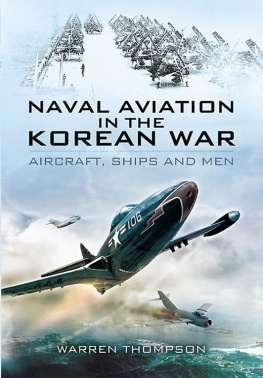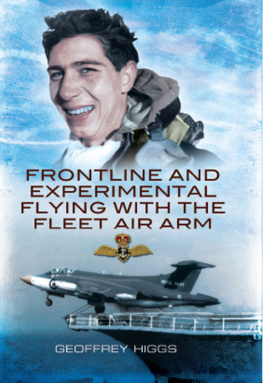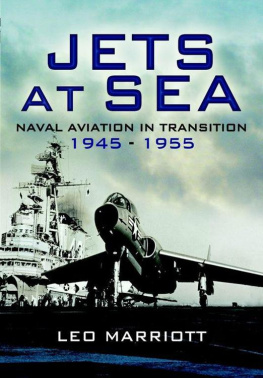
A Royal Navy Phantom of C Squadron, A & AEE Boscombe Down, carrying out deck landing trials on HMS Eagle in 1969. The ship had recently been modernised and was in far better material condition than her sister Ark Royal but was withdrawn from service early for political reasons and never embarked Phantoms operationally. (US NAVY)
Copyright David Hobbs 2009
First published in Great Britain in 2009 by
Seaforth Publishing
An imprint of Pen & Sword Books Ltd
47 Church Street, Barnsley
S Yorkshire S70 2AS
www.seaforthpublishing.com
Email
British Library Cataloguing in Publication Data
A CIP data record for this book is available from the British Library
ISBN 978-1-84832-019-2
EPUB ISBN: 978-1-78346-931-4
PRC ISBN: 978-1-78346-698-6
All rights reserved. No part of this publication may be reproduced or transmitted in any
form or by any means, electronic or mechanical, including photocopying, recording, or
any information storage and retrieval system, without prior permission in writing of
both the copyright owner and the above publisher.
The right of David Hobbs to be identified as the author of this work has been asserted
by him in accordance with the Copyright, Designs and Patents Act 1988
Typeset and designed by Roger Daniels
Printed and bound in Thailand
DEDICATION
Thousands of men and women have qualified to fly from aircraft carriers in the past hundred years in many different navies. This book, in its humble way, is dedicated to their vision and achievements.
Many of them died flying, and I remember especially Commander Tony Light RN, my Commanding Officer in 849HQ Squadron, and his observer, Lieutenant Commander J.P. Moody RN, who crashed and died yards in front of me in their Gannet in the MADDL circuit at RNAS Lossiemouth. My term-mates from BRNC Dartmouth, Lieutenant Commander Gordon Batt DSO RN and Lieutenant Commander Steve Van Someren RN, crashed into the sea at night and have no other grave. I am proud to have known them.
Acknowledgements
I am, as always, grateful to my wife Jandy for her help with research and administration, and to my son Andrew for his unfailing support for everything I do.
Much of the latter part of this work has been put together from my own experience of carrier flying in both fixed- and rotary-wing aircraft in roles as diverse as Airborne Early Warning and Commando Assault. Research into earlier generations of naval aviators has occupied a number of years, and has been carried out in the archives of the Naval Historical Branch, now at Portsmouth, and the Fleet Air Arm Museum at RNAS Yeovilton. I am grateful to the Head of Branch, Captain Christopher Page RN (Retired) and Librarian Jenny Wraight at the former for their constant support and interest in my writing. At the latter I am grateful to the Archivists Jan Keohane and Catherine Cooper, who have helped me to find a number of early references.
Most of the photographs are from the collection I inherited from my friend, the late J. David Brown, formerly the Head of the Naval Historical Branch. I have added to the collection with images I took myself over the years. These have been supplemented by others from the USA and Australia. I am grateful to Laura Waayers, Historical Services Manager of the US Naval Historical Foundation, for copying the photographs credited to the Naval Historical Center. Dr David Stevens, Director of Strategic and Historical Studies at the Sea Power Centre Australia, sent me the images of Sopwith Camels and 1 Strutters on HMA Ships Australia and Sydney, credited to the Sea Power Centre, for which I am extremely grateful. I am also indebted to Ken Ellis, Editor of FlyPast magazine, for the photographs that Key Publishing provided. My thanks also go to Steve Bush, editor of Warship World magazine, who gave valuable help in the selection of photographs. The books listed in the bibliography all come from my own library.
Conversations with naval aircrew from Australia, Canada, New Zealand and the USA, as well as those in the UK, have continued to widen my knowledge of the subject, and I am grateful to them all. They are too numerous to mention, but I will single out Gannet observers John Irving and Steve Hazell, who sat behind me on my first day catapult launch and subsequent deck landing. Peter Flutter and Peter Hulett flew with me through many of the more exciting launches and recoveries on nights that seemed particularly dark at the time, and on a practice bombing sortie when we hit and destroyed a splash target towed behind an RFA, an unusual triumph for an AEW crew. Their confidence meant a lot to me, even if I did not show it at the time, and I treasure the memories of a very happy era of deck operations.
Lastly, I am grateful to Rob Gardiner of Seaforth Publishing for the opportunity to publish this work.
Glossary
A&AEE | Aeroplane and Armament Experimental Establishment |
ACA | Admiral Commanding Aircraft, Grand Fleet |
ACNS | Assistant Chief of the Naval Staff |
ACR | Aircraft Control Room |
ACRO | Aircraft Control Room Officer |
ADD | Airflow Direction Detector |
ADDL | Airfield Dummy Deck Landing |
ADR | Aircraft Direction Room |
AEW | Airborne Early Warning |
AFC | Air Force Cross |
AIO | Action Information Organisation |
AOC | Air Officer Commanding |
AOR | Amphibious Operations Room |
APU | Auxiliary power unit |
ASI | Air speed indicator |
ASW | Antisubmarine warfare |
ATCO | Air Traffic Control Officer |
Avgas | Aviation gasoline |
BH | British hydraulic (catapult) |
BLC | Boundary layer control |
BPF | British Pacific Fleet |
BRC | Base Recovery Course |
BS | British steam (catapult) |
BuAir | Bureau of Aircraft, USN |
BuNav | Bureau of navigation, USN |
BXS | British Experimental Steam (catapult) |
CAI | Close-Approach Indicator |
CALE | Catapult Aircraft Line-Up Equipment |
CAM-Ship | Catapult Armed Merchant ship |
CAP | Combat air patrol |
CCA | Carrier Controlled Approach |
CDS | Comprehensive Display System |
CIC | Combat Information Centre |
CNO | Chief of Naval Operations, USN |
ComAirBatFlt | Commander Air Squadrons Battle Fleet, USN |
CPO | ChiefPetty Officer |
CV | USN/NATO designation for an aircraft carrier |
CVA | USN/NATO designation for an attack aircraft carrier |
Next page
